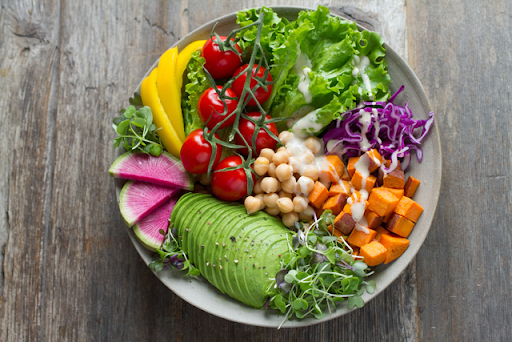
Why Gluten? How is Gluten the Cause of So Many Health Issues?
Going “gluten-free” has been a popular phrase tossed around among health-conscious people and the medical community alike in the past few years. There are a number of reasons why someone would want to limit or eliminate gluten in their diet, but there is no question that gluten can cause issues for many. Studies show that 20% to 30% of the population follows a gluten-free diet.
Extending far beyond a “diet fad,” paying close attention to the amount of gluten in your diet can lead to better health inside and out. People who switch to a gluten-free diet have reported alleviation of their inflammation symptoms within days. Those who reported a gluten-related “brain fog” experienced more clarity within a week. More pervasive symptoms, such as itchy rashes or an upset stomach may take longer to resolve. However, sufferers and experts are in agreement that switching to a gluten-free diet or using gluten-free skin products can lead to better internal and external health.
But why gluten? Why is this relatively innocuous protein the source of so many problems? Unraveling the problem starts with delving into gluten’s definition and what it does.
What is Gluten?
Gluten is a protein that is known as a “binder”. It is found in wheat, rye, barley, and triticale, which is a combination of wheat and rye. When you picture someone at a pizza parlor throwing dough in the air, the dough stretches and expands because of gluten. It gives food a stretchy quality and helps it maintain its shape. While gluten serves a purpose in many foods with its binding qualities, it has no nutritional value.
Gluten is found nearly everywhere, making it almost impossible to avoid exposure to gluten altogether. Gluten is not found just in food products; it can be in our cosmetics, skincare products, toothpaste, herbal supplements, and even Play-Doh.
Gluten Causing Havoc
When experiencing stomach issues, skin issues, and fatigue, one may struggle with pinpointing why they look or feel so bad. Gluten could often be the culprit, but many are unaware of the harmful effects of gluten.
Experts have not developed solid evidence of exactly why gluten causes the issues it does, but they agree that several factors are at play. Some believe that people with adverse reactions to gluten are actually negatively reacting to carbohydrates. Others say that data strongly suggests a strong immune response is behind the gut issues and skin flare-ups associated with gluten intolerance.
Whatever the root cause, it’s clear that gluten can wreak havoc on one’s health. When one is completely intolerant to gluten, they may be diagnosed with Celiac Disease, an auto-immune condition that affects the intestines, creating a problem with the absorption of nutrients. Malabsorption of nutrients can lead to diarrhea, weight loss, bloating, and anemia. If Celiac Disease goes untreated, it can permanently damage the small intestine.
One does not have to have full-blown Celiac Disease to suffer the ill effects of gluten intolerance. Non-celiac gluten intolerance (NCGI) can also lead to inflammation, stomach upset, and skin issues such as rashes and breakouts. It can be challenging to properly diagnose an NCGI because of the general mystery behind the exact causes of gluten intolerance.
Suppose one suspects a non-celiac gluten sensitivity or full-on Celiac Disease may be behind their various health issues. In that case, the first step is to speak to a doctor about the symptoms they may be experiencing. Typically, Celiac Disease is diagnosed via a blood panel, and may even require a biopsy of the small intestine. Diagnosis of non-celiac gluten sensitivity involves eliminating gluten from the diet for a time to track symptom alleviation. It is a diagnosis of elimination, ticking off reactions to a gluten-free diet, ruling out full-blown Celiac Disease, and making a determination based on how the body reacts.
Building a Gluten-Free Life
How do people proceed once NCGI or Celiac Disease has been diagnosed? The path from diagnosis to complete elimination of gluten from one’s diet and regularly used products can be challenging. Again, gluten is everywhere.
On a positive note, more and more companies that produce food and other gluten-containing products are becoming increasingly committed to providing gluten-free options. The heightened focus on the adverse effects of gluten has, in many ways, opened up a whole new industry niche. In 2019, the gluten-free business stood at $4.3 billion. It’s estimated that it could reach over $7 billion by 2027 as more people come to understand the negative effects of gluten. This market surge is likely connected to the increased spotlight on gluten intolerance and an overall better understanding of gluten issues.
More people are being diagnosed with gluten intolerance and Celiac Disease. 2020 saw an over 7% increase in Celiac Disease diagnoses over previous years. With this increase in incidents of Celiac Disease and general non-celiac intolerance of gluten, the gluten-free market has boomed.
If one is starting a gluten-free life, they may be concerned about their choices being limited. However, there are many wonderful choices for gluten-free foods and products that can allow sufferers to lead a healthier life.
The Gluten-Free Market
The growing gluten-free market supplies those with gluten intolerance with more and more options every year. If one has been directed to eliminate gluten from their diets, there are several resources they can turn to for help.
A gluten-free food list is a great place to start. With gluten being so pervasive, it can be challenging to know what foods are safe. By law, a food or product must contain less than 20 parts per million of gluten to be labeled “gluten-free.” Health experts and lawmakers made this distinction because levels less than 20 PPM are relatively impossible to detect. Research has indicated that most people with Celiac Disease or a non-celiac intolerance to gluten can handle this small level of gluten in their food or products without issue.
However, not all gluten-free food or products are labeled as such. This lack of clear labeling is why people diagnosed with Celiac Disease or intolerance may want to educate themselves on gluten-free food and products, and carry a gluten-free list.
Gluten-Free Eating
Many peoples’ favorite foods contain gluten, making switching to a gluten-free diet all the more cumbersome. Yet, once one acclimates to the gluten-free world, they will discover many delicious options available.
Naturally, gluten-free options such as rice, corn, buckwheat, and oats labeled as gluten-free are great ways to replace the missing starches in your diet. Gluten-free proteins like red meat, chicken, turkey, and seafood are a great way to get enough protein in your diet. Check ingredients on proteins carefully, as many such as ground beef may contain gluten. People adhering to a gluten-free diet can also continue to enjoy mayonnaise, mustard, and most dry spices.
While a gluten-free diet may seem restrictive, many options are still available.
Gluten-Free Products
Gluten intolerance doesn’t just affect one’s digestion and internal health. Celiac Disease or NCGI can rear their ugly heads on your skin as well. Inflammation, breakouts, dry skin, and rashes can all appear in response to gluten intake. Many skin care and cosmetic companies have begun to make gluten-free products a priority.
Gluten can be commonly used in cosmetics and skincare products for the same reasons it is used in food. Its binding properties make cosmetics and skincare products pliable. The FDA does not require companies to label their skincare or cosmetic products as gluten-free. However, companies such as my own, Epilynx, and others have been going out of their way to provide gluten-free options to those who need them.
In a survey conducted by the Gluten Free Certification Organization (GFCO), over 80% of respondents said they seek out gluten-free products. My husband and I started our company out of frustration from not being able to find products that were guaranteed gluten-free. I knew that if I was experiencing issues finding what I needed to better my health, others had to have been experiencing frustration as well.
The skin is the body’s largest organ but often gets overlooked when considering overall health and wellness. To stave off the negative effects of gluten, assuring that one’s skin and cosmetic products are gluten-free is a great place to start.
Before I began my own company, there was a day that I looked in the mirror and was dismayed by the red spots that I saw. At the time, not only was I experiencing a psoriasis flare-up, but my internal health was also out-of-whack. I struggled with high blood pressure and inflammation. I decided to eliminate bread, pasta, and pizza from my diet, effectively going gluten-free. I saw a marked difference in my health. My research into the effects of gluten on the body led to starting my gluten-free, medically clean skincare business.
Gluten-free is not just a buzzword or a fad diet destined to be shelved once the next big thing comes along. To commit to a gluten-free life means concentrating on wellness inside and out. As experts and scientists begin to uncover more about the effects of gluten on the body, there will emerge more options for those with gluten intolerance.







